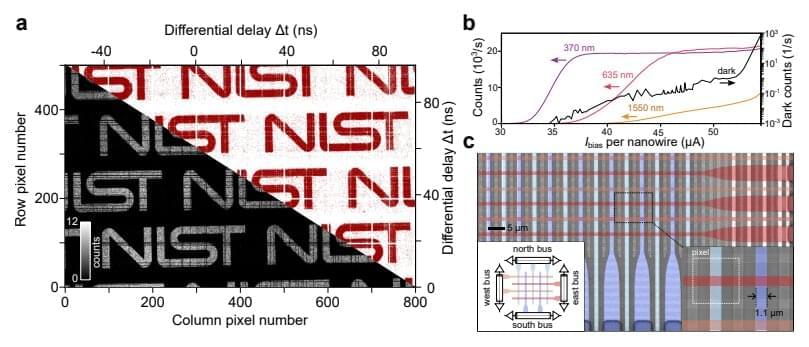A team at the National Institute of Standards and Technology in Boulder, Colorado, has reported the successful implementation of a 400,000 pixel superconducting nanowire single-photon detector (SNSPD) that they say will pave the way for the development of extremely light-sensitive large-format superconducting cameras. The camera will also prove invaluable for those doing medical research, where the ability to examine organs such as the brain without disturbing tissue is critical.
Superconducting detectors operate at very low temperatures and generate a minimum of excess noise, making them ideal for testing the non-local nature of reality, investigating dark matter, mapping the early universe, and performing quantum computation and communication. Previously there were no large-scale superconducting cameras – even the largest demonstrations have never exceeded 20 thousand pixels.
This was especially true for one of the most promising detector technologies, the superconducting nanowire single-photon detector (SNSPD). These detectors have been demonstrated with system detection efficiencies of 98.0%, sub-3-ps timing jitter, sensitivity from the ultraviolet (250nm) to the mid-infrared (10um), and dark count rates below 6.2e-6 counts per second (cps), but despite more than two decades of development they have never achieved an array size larger than a kilopixel. Here, we report on the implementation and characterization of a 400,000 pixel SNSPD camera, a factor of 400 improvement over the previous state-of-the-art. The array spanned an area 4×2.5 mm with a 5x5um resolution, reached unity quantum efficiency at wavelengths of 370 nm and 635 nm, counted at a rate of 1.1e5 cps, and had a dark count rate of 1e-4 cps per detector (corresponding to 0.13 cps over the whole array).
